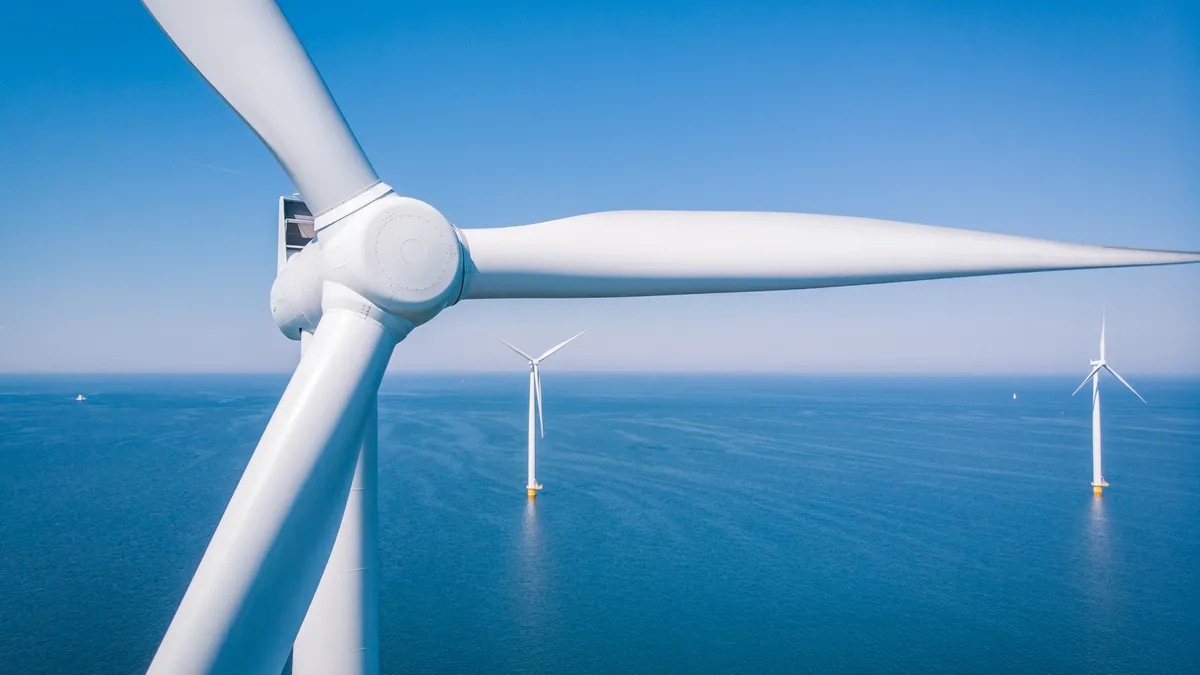Dive Brief:
- A Dec. 6 auction by the Bureau of Ocean Energy Management, or BOEM, is slated for the outer continental shelf in designated wind energy areas beyond Morro Bay and Humboldt. It will be the first lease sale of sea-based wind turbines in the Pacific Ocean.
- The upcoming sale of five leases is the first to support wind turbines that float in deep waters instead of being anchored to the seafloor, the Department of Interior said Oct. 18.
- The California lease auction has generated much interest from public and private officials, wind energy developers and clean energy advocates, as has the dollar amount of the bids for an emerging technology. Bids for six leases for wind turbines largely anchored to a more shallow seafloor off the New York and New Jersey coasts, covering 488,000 acres, generated $4.37 billion in February.
Dive Insight:
The upcoming California lease sale “will be an exciting auction to watch,” said Melinda Skea, Business Network for Offshore Wind spokesperson.
The five BOEM leases covering 373,268 acres of watery real estate are expected to advance fossil-free energy, reduce air pollution and create thousands of jobs, according to the Biden administration and labor, environmental, environmental justice and business groups.
“Today, we are taking another step toward unlocking the immense offshore wind energy potential of our nation’s west coast to help combat the effects of climate change while lowering costs for American families and creating good-paying union jobs,” Interior Secretary Deb Haaland said in a statement.
California's Sens. Dianne Feinstein, D, and Alex Padilla, D, said in a joint Tuesday statement that developing a state offshore wind industry “is a critical part of California’s clean energy future, and if designed with the needs of local communities in mind, can address climate change while minimizing harm to our natural resources.”
Last August, the California Energy Commission approved a target of 5 GW of offshore wind development by 2030, and 25 GW by 2045 to help the state reach 100% clean energy in 23 years.
Windmills that float thousands of feet above a seafloor are an emerging technology that cost 50% more than ones anchored to shallower seabeds. The Department of Energy seeks to lower the costs of this technology by 70%, to $45 per MWh, by 2035.
The combination of California’s long-term goals and the federal government’s effort to lower the cost of floating turbines will enable the West Coast offshore wind industry to “singularly rival those on the global stage and could draw billions in U.S. supply chain investment,” said Liz Burdock, president and CEO of the Business Network for Offshore Wind. She urged the Biden administration to quickly move to free up “critical support for port and transmission investments.”
The Biden administration is aiming to install 30 GW of offshore wind turbines by 2030 and 15 GW of floating turbines by 2035.
A National Renewable Energy Laboratory report released Tuesday estimated that the offshore wind industry will need between 15,000 and 58,000 full-time jobs every year from 2024 to 2030 - an increase from less than 1,000 jobs today. The number, it stated, depends on the amount of American-made resources used.













